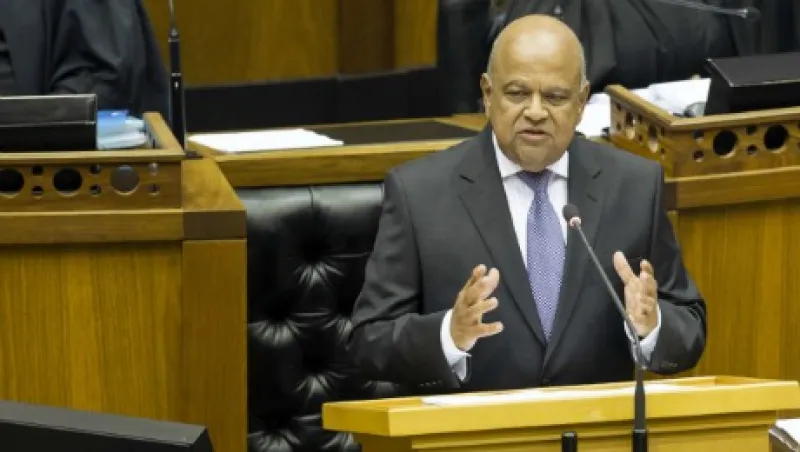The news last week from Standard & Poor’s that it would not downgrade South Africa’s credit rating from investment-grade to junk status provokes a host of questions ahead of the next credit rating action, in December. The announcement was not unexpected, but it did constitute a hawkish hold; S&P put a negative outlook on the country’s debt rating, giving a clear warning to South African policymakers to shore up the economy. (Fitch and Moody’s have also kept South Africa’s bond rating at investment-grade.) The decision constitutes merely a stay of execution until December, which is now the focus for markets and South Africa’s National Treasury. Where to from here?
S&P’s credit rating is based on an assessment of five factors: institutional, economic, external, fiscal and debt burden, and monetary. Thanks to the strength of the South African Reserve Bank, the monetary assessment remains firmly positive. S&P has noted that potential triggers for a downgrade are lower GDP growth; risk concerning state-owned enterprises, notably, the state airline South African Airways, the roads agency SANRAL and the public power utility Eskom; a reduction in fiscal flexibility; and an increase in external imbalances.
External deterioration is driven by factors that South Africa cannot influence, but debt burden and institutional issues are within the country’s control. A commitment to shore up both of these areas would also significantly benefit economic factors. The main trigger for a revision of the outlook to stable is structural reforms in South Africa that would be in the form of “self-help”: boosting business confidence, raising potential growth and increasing private sector investment.
Last December S&P indicated that it was concerned about further fiscal deterioration and state-owned enterprises incurring large debt, which could be consolidated onto the South African government balance sheet. It is encouraging that we at Investec Asset Management have seen no further weakening in either of these two areas. Indeed, Finance minister Pravin Gordhan produced a positive budget in February, which assumed expenditure growth below previous forecasts. Since wage increases were agreed to in May 2015 and fixed until the 2017–’18 financial year, the only lever for reducing compensation is to cut public sector jobs. So far, we have seen public sector job growth halt in 2016, but it needs to turn negative. A central risk is that government does not deliver these cuts and, at the same time, revenue disappoints because of flagging growth.
The primary balance before borrowing costs is expected to move from deficit into surplus this year. This would be the first primary surplus since 2008 and would signal a major achievement. We have only two months of data, but from the numbers we do have, Treasury is on track to deliver, providing no slippage occurs.
For S&P, the key long-term measure is the country’s growth rate. Since 2009, South Africa’s GDP has grown by an average of 2.4 percent a year. Since the beginning of 2014, however, the rate has fallen to 1.5 percent. The deteriorating growth outlook is the origin of the credit rating problem, with South Africa’s potential output growth rate falling from roughly 4.5 percent in 2013 to around 1.8 percent at present. If growth does not rise in 2016 above the 0.4 percent expected in our analysis, worries about the future ability of South Africa to service its debt beyond 2020–’25 will surface, potentially creating the basis for risks to attract notice in the December assessment.
With a persistent deterioration in global growth expectations over the past six to seven years, international conditions have been difficult. Yet the end of the commodity supercycle and China’s slowing growth are only part of the problem; in our view, the bulk of the issue is domestic in nature. Both the deterioration in South Africa’s currency and the borrowing costs last year were caused mainly by local factors, including the disappointing budget outlook and growing concerns over the strength of South Africa’s institutions.
Following the sharp sell-off after President Jacob Zuma’s removal of Nhlanhla Nene from the Finance minister post on December 9, the South African rand and bond yields have rebounded sharply. South Africa still scores ahead of Brazil, China and India on the World Bank’s “Doing Business” ranking, at No. 73 overall. South Africa also scores favorably among BRICS countries on factors such as dealing with construction permits, protecting investors and paying taxes. The main area of weakness is in the access to electricity category, in which South Africa scores toward bottom of the list, between Uganda and Niger.
Unless confidence is restored, fixed investment and thus potential growth will remain low. Overall, however, South Africa still retains significant institutional strengths upon which it can build.
Although South Africa has several self-inflicted wounds to further suppress its growth rate, there are a number of steps that, in our view, could bring growth back on track toward 2 percent, a level that would avoid a below-investment-grade rating. Examples are elimination of visa approval hurdles, given a weak currency and healthy growth in tourism; a cleanup of mining legislation; and progress in improving the labor market and state-owned enterprises. To achieve a positive result, we need to see government, business and labor working together on a unified path.
Malcolm Charles is a portfolio manager, and Nazmeera Moola is an economist and strategist; both at Investec Asset Management in Cape Town.
Get more on emerging markets.






